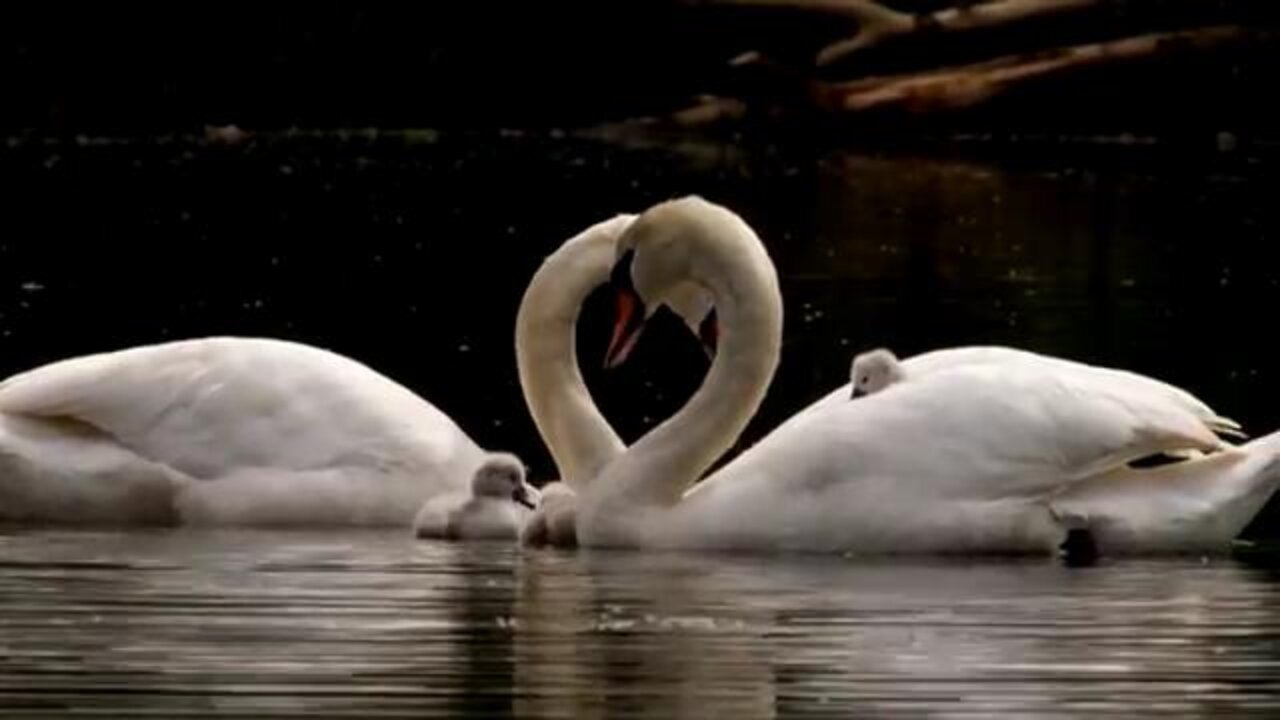Premium Only Content

Mute Swans swimming and eating
The mute swan is a species of swan and a member of the waterfowl family. The name 'mute' derives from it being less vocal than other swan species. The mute swan is one of the heaviest flying birds.
One of the world's most aggressive waterfowl species, especially while nesting and raising their young, mute swans drive out native waterfowl and other wetland wildlife with their hostile behavior.
Mute swan damage includes competing with native waterfowl, destroying native plants, spreading disease, and colliding with aircraft. They are also considered a nuisance in some areas due to their abundant fecal droppings and aggressiveness towards people.
Measuring 125 to 170 cm (49 to 67 in) in length, this large swan is wholly white in plumage with an orange beak bordered with black. It is recognisable by its pronounced knob atop the beak, which is larger in males.
It is native to much of Eurosiberia, and (as a rare winter visitor) the far north of Africa.It is an introduced species in North America – home to the largest populations outside of its native range – with additional smaller introductions in Australasia and southern Africa.
Young birds, called cygnets, are not the bright white of mature adults, and their bill is dull greyish-black, not orange, for the first year.
The down may range from pure white to grey to buff, with grey/buff the most common. The white cygnets have a leucistic gene. Cygnets grow quickly, reaching a size close to their adult size in approximately three months after hatching. Cygnets typically retain their grey feathers until they are at least one year old, with the down on their wings having been replaced by flight feathers earlier that year.
All mute swans are white at maturity, though the feathers (particularly on the head and neck) are often stained orange-brown by iron and tannins in the water.
-
 20:07
20:07
BlackDiamondGunsandGear
12 hours agoSPRINGFIELD ECHELON COMPACT / NOT GOOD
37.8K3 -
 1:05:06
1:05:06
Man in America
13 hours agoThe Terrifying Truth Behind Chemical Fog, Wildfire Smoke & Chemtrails w/ Dr. Robert Young
32.9K35 -
 2:54:47
2:54:47
Tundra Tactical
6 hours ago $1.03 earnedSHOT Show 2025 Wrap Up!! On The Worlds Okayest Gun Live Stream
38.5K -
 LIVE
LIVE
Right Side Broadcasting Network
1 day agoLIVE REPLAY: President Donald J. Trump Holds His First Rally After Inauguration in Las Vegas - 1/25/25
3,246 watching -
 2:55:24
2:55:24
Jewels Jones Live ®
1 day agoWEEK ONE IN REVIEW | A Political Rendezvous - Ep. 107
115K40 -
 1:33:29
1:33:29
Michael Franzese
1 day agoTrump Wastes No Time: Breaking Down Trump’s First Week Executive Orders | LIVE
130K94 -
 1:26:44
1:26:44
Tactical Advisor
15 hours agoTrump Starting Strong/Shot Show Recap | Vault Room Live Stream 015
93.6K9 -
 10:18
10:18
MrBigKid
11 hours ago $2.06 earnedInsanely Compact Hunting Tripod you HAVEN'T heard of... Revolve
49.5K5 -
 20:29
20:29
marcushouse
18 hours ago $8.06 earnedUnleashing the Power of SpaceX's Starship: Why is it a Big Deal!?
84.4K11 -
 10:46
10:46
Rethinking the Dollar
1 day agoTrump Knows 'The Real Threat' To Your National Security
60.3K18